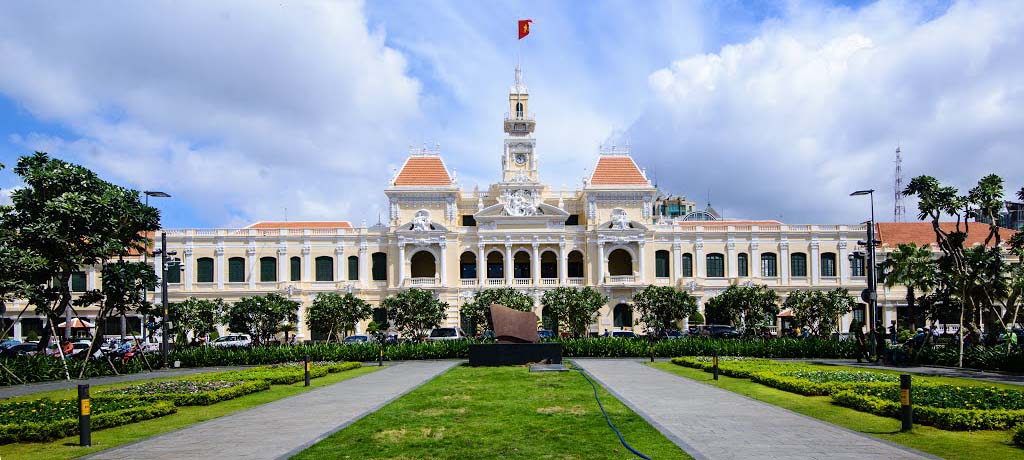UTS-HCMUT Research School 2020
Enabling Technologies for Smart and Secure Society
Ho Chi Minh City University of Technology, VNU-HCM, Vietnam
Speaker 1: Distinguished Prof. Y. Jay Guo
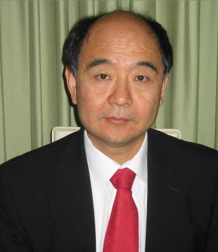 Short Bio: Distinguished Prof. Y. Jay Guo is the founding Director of Global Big Data Technologies Centre (GBDTC) at the University of Technology Sydney (UTS), Australia. Prior to this appointment in 2014, he served as a Director in CSIRO for over nine years. Before joining CSIRO, he held various senior technology leadership positions in Fujitsu, Siemens and NEC in the U.K. He is a Fellow of the Australian Academy of Engineering and Technology, a Fellow of IEEE and a Fellow of IET. He has won a number of most prestigious Australian engineering and CSIRO awards, and was named one of the most influential engineers in Australia in 2014 and 2015, respectively. His research interest includes antennas, mm-wave and THz communications and sensing systems as well as big data technologies. He has published over 450 research papers including 260 journal papers and holds 26 patents in antennas and wireless systems.
Short Bio: Distinguished Prof. Y. Jay Guo is the founding Director of Global Big Data Technologies Centre (GBDTC) at the University of Technology Sydney (UTS), Australia. Prior to this appointment in 2014, he served as a Director in CSIRO for over nine years. Before joining CSIRO, he held various senior technology leadership positions in Fujitsu, Siemens and NEC in the U.K. He is a Fellow of the Australian Academy of Engineering and Technology, a Fellow of IEEE and a Fellow of IET. He has won a number of most prestigious Australian engineering and CSIRO awards, and was named one of the most influential engineers in Australia in 2014 and 2015, respectively. His research interest includes antennas, mm-wave and THz communications and sensing systems as well as big data technologies. He has published over 450 research papers including 260 journal papers and holds 26 patents in antennas and wireless systems.
Title of the talk: Advanced Antennas for 5G and 6G
Abstract: 5G and 6G future wireless communications systems are poised to revolutionise our society and industries. They will provide ultra-high reliability, extremely high data-rates, ultra-low latency and high level of privacy and security for communications among people and moving platforms on the ground, at the sea, and in the sky. They will support the inter-working of robots, drones and other autonomous machines. These will pose unprecedented challenges to antenna and RF technologies. Future antennas must support extremely wide band operation, from microwave to terahertz frequencies. They must be light, compact and conformal to moving platforms. They need to be low-cost and consume minimum power. They will support simultaneous communications by using high gain multi-beams. They will be reconfigurable. These challenges provide abundant opportunities to antenna and RF researchers and engineers. In this talk, we shall discuss these challenges and possible solutions, and explore the potential and limits of some emerging technologies. We shall show a glimpse of some of the pathways we have taken at GBDTC @ UTS to develop cutting-edge antenna and RF systems for the future.
------------------------------------------------------------------------------------------
Speaker 2: Prof. Xiaojing Huang
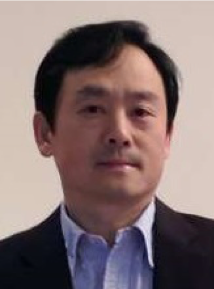 Short Bio: Prof. Xiaojing Huang received the B.Eng., M.Eng., and Ph.D. degrees in electronic engineering from Shanghai Jiao Tong University, Shanghai, China, in 1983, 1986, and 1989, respectively. He is currently a professor of information and communications technology with the School of Electrical and Data Engineering and the program leader of Mobile Sensing and Communications with the Global Big Data Technologies Centre, University of Technology Sydney (UTS), Sydney, Australia. He was with the Motorola Australian Research Centre as a Senior and then Principal Research Engineer from 1998 to 2003. He had been an Associate Professor with the University of Wollongong, Wollongong, Australia, from 2004 to 2008. He had been a Principal Research Scientist with the Commonwealth Scientific and Industrial Research Organisation (CSIRO), Sydney, Australia, and the project leader of CSIRO’s microwave and millimetre wave backhaul projects from 2009 to 2014. He was a recipient of the CSIRO Chairman’s Medal and the Australian Engineering Innovation Award in 2012 for exceptional research achievements in multigigabit wireless communications. With 31 years of combined industrial, academic, and scientific research experience, he has authored over 300 book chapters, refereed journal and conference papers, major commercial research reports, and has filed 31 patents. Prof. Huang served as Technical Program Committee Chairs and/or Co-Chairs for a number of international conferences such as ISCIT (2007, 2010, 2012-2014, and 2016), ICUWB2013, WPMC2014, and VTC2017-Spring.
Short Bio: Prof. Xiaojing Huang received the B.Eng., M.Eng., and Ph.D. degrees in electronic engineering from Shanghai Jiao Tong University, Shanghai, China, in 1983, 1986, and 1989, respectively. He is currently a professor of information and communications technology with the School of Electrical and Data Engineering and the program leader of Mobile Sensing and Communications with the Global Big Data Technologies Centre, University of Technology Sydney (UTS), Sydney, Australia. He was with the Motorola Australian Research Centre as a Senior and then Principal Research Engineer from 1998 to 2003. He had been an Associate Professor with the University of Wollongong, Wollongong, Australia, from 2004 to 2008. He had been a Principal Research Scientist with the Commonwealth Scientific and Industrial Research Organisation (CSIRO), Sydney, Australia, and the project leader of CSIRO’s microwave and millimetre wave backhaul projects from 2009 to 2014. He was a recipient of the CSIRO Chairman’s Medal and the Australian Engineering Innovation Award in 2012 for exceptional research achievements in multigigabit wireless communications. With 31 years of combined industrial, academic, and scientific research experience, he has authored over 300 book chapters, refereed journal and conference papers, major commercial research reports, and has filed 31 patents. Prof. Huang served as Technical Program Committee Chairs and/or Co-Chairs for a number of international conferences such as ISCIT (2007, 2010, 2012-2014, and 2016), ICUWB2013, WPMC2014, and VTC2017-Spring.
Title of the talk: Towards Terabit Wireless Communications
Abstract: With the ever increasing demand for wireless connectivity, mobile data traffic continues to grow following the “omnify” principle, i.e., the data rate is observed to have an order of magnitude increase every five years, making wireless communication one of the most dramatic game-changing technologies. At this “omnify” pace, data rate for wireless transmission is expected to increase by a hundred time from current 10 Gbps within the next decade, achieving terabits per second. As the 5G mobile system emerges, ground based networks become more and more mature. However, there are still significant technological challenges to extend wireless coverage through the integration of space and terrestrial networks and to replace the last mile wired network with terabit wireless links. In this presentation, the evolution of wireless communication technologies is firstly reviewed, and the importance of millimetre wave radio frequency backbones in the integrated space and terrestrial networks is then addressed. An overview of the applications and technical challenges of the emerging terahertz wireless communications is given afterwards. Finally, some enabling techniques for improving spectral efficiency and power efficiency for millimetre wave and terahertz communications are discussed.
------------------------------------------------------------------------------------------
Speaker 3: Prof. Ren Ping Liu
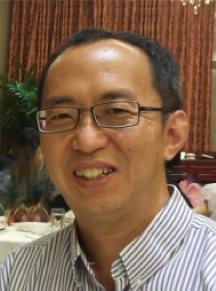 Short Bio: Prof. Ren Ping Liu is a Professor and Head of Discipline of Network and Cybersecurity in the School of Electrical and Data Engineering at University of Technology Sydney. He was the co-founder and CTO of Ultimo Digital Technologies, developing IoT and Blockchain. Prior to that he was a Principal Scientist and Research Leader at CSIRO, where he led wireless networking research activities. Professor Liu was the winner of Australian Engineering Innovation Award and CSIRO Chairman’s medal. He specialises in protocol design and modelling and has delivered networking solutions to a number of government agencies and industry customers. His research interests include 5G, VANET, IoT, cybersecurity, and Blockchain. He has over 150 research publications and has supervised over 30 PhD students. Professor Liu was the founding chair of IEEE NSW VTS Chapter and a Senior Member of IEEE. He served as Technical Program Committee chairs, Organising Committee chairs, and delivered keynote speeches in a number of IEEE Conferences and industry forums.
Short Bio: Prof. Ren Ping Liu is a Professor and Head of Discipline of Network and Cybersecurity in the School of Electrical and Data Engineering at University of Technology Sydney. He was the co-founder and CTO of Ultimo Digital Technologies, developing IoT and Blockchain. Prior to that he was a Principal Scientist and Research Leader at CSIRO, where he led wireless networking research activities. Professor Liu was the winner of Australian Engineering Innovation Award and CSIRO Chairman’s medal. He specialises in protocol design and modelling and has delivered networking solutions to a number of government agencies and industry customers. His research interests include 5G, VANET, IoT, cybersecurity, and Blockchain. He has over 150 research publications and has supervised over 30 PhD students. Professor Liu was the founding chair of IEEE NSW VTS Chapter and a Senior Member of IEEE. He served as Technical Program Committee chairs, Organising Committee chairs, and delivered keynote speeches in a number of IEEE Conferences and industry forums.
Title of the talk: IoT and Blockchain: Technologies, Challenges, and Applications
Abstract: The Internet of Things (IoT) is poised to transform our lives and unleash enormous economic benefit. In this talk, we discuss a wide range of IoT technologies and their applications, as well as the security and trust implications. Blockchain, a distributed ledger, was initially designed as a secure financial transaction tool. Remarkably, its cryptographic security benefits, such as user anonymity, decentralization, fault tolerance, transaction integrity and authentication, can be used to resolve security and trust issues of IoT. In UTS, we are working with industry to develop next generation IoT and Blockchain technologies to achieve real time tracking and monitoring from production plants through export supply chains to overseas markets. A Blockchain enabled data platform has been developed to secure IoT data records, enable transparent and trusted data sharing. Smart contracts are developed to manage and automate commercial transactions following the commodity flows. In this talk, we will discuss the benefits, limitations, and challenges of IoT and Blockchain. I will present some of our latest project results in IoT and Blockchain applications.
------------------------------------------------------------------------------------------
Speaker 4: Dr. Can Ding
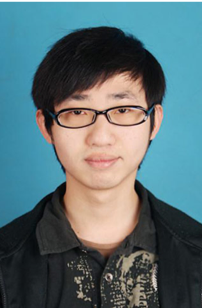 Short Bio: Can Ding obtained a Bachelor Degree in Microelectronics from Xidian University, and a PhD Degree from Macquarie University in antennas and microwave circuits. Since May 2015, Dr. Ding has been working as a Postdoctoral Research Fellow in the University of Technology Sydney (UTS) on advanced base station antenna technologies. He is now a Lecturer in UTS. Thanks to his technical contributions, his research has led to three industrial research funds from Tongyu Communications Pty Ltd on commercialize base station antenna designs. Despite the industrial nature of the projects he has been working on, Dr. Ding has authored and co-authored over 30 top-tier journal papers, 20 international conference papers, one book and he holds 4 international patents. He is awarded as an Australian Research Council (ARC) Distinguish Early Career Research Award (DECRA) fellow start from 2020, which is the most prestigious fellowship for early career researchers in Australia. He also received the SEDE outstanding Early Career Researcher Award in 2019. In addition, he is the receipts of several conference awards, for example the best student presentation paper in ASA 2015, the honorable mention prize on APS 2018. Moreover, Dr. Ding has delivered several invited talks and served as TPC Co-chair, secretary, and session chair in several top-tier international conferences. He is also the reviewer of many IEEE Transaction journals.
Short Bio: Can Ding obtained a Bachelor Degree in Microelectronics from Xidian University, and a PhD Degree from Macquarie University in antennas and microwave circuits. Since May 2015, Dr. Ding has been working as a Postdoctoral Research Fellow in the University of Technology Sydney (UTS) on advanced base station antenna technologies. He is now a Lecturer in UTS. Thanks to his technical contributions, his research has led to three industrial research funds from Tongyu Communications Pty Ltd on commercialize base station antenna designs. Despite the industrial nature of the projects he has been working on, Dr. Ding has authored and co-authored over 30 top-tier journal papers, 20 international conference papers, one book and he holds 4 international patents. He is awarded as an Australian Research Council (ARC) Distinguish Early Career Research Award (DECRA) fellow start from 2020, which is the most prestigious fellowship for early career researchers in Australia. He also received the SEDE outstanding Early Career Researcher Award in 2019. In addition, he is the receipts of several conference awards, for example the best student presentation paper in ASA 2015, the honorable mention prize on APS 2018. Moreover, Dr. Ding has delivered several invited talks and served as TPC Co-chair, secretary, and session chair in several top-tier international conferences. He is also the reviewer of many IEEE Transaction journals.
Title of the talk: Empowering the collocation of 3G/4G/5G base station antennas for 5G infrastructure
Abstract: The fifth-generation (5G) mobile communication systems are widely hailed as a key enabler for the next wave of industrial innovation and economic growth. Currently, there is a global race to develop cutting edge technologies for 5G and to create innovative strategies to deploy 5G networks cost-effectively. The stakes are high and the competition is fierce. To ensure 5G coverage, many 5G base stations will need to be installed. Acquiring new sites for base station antennas would lead to substantial increases in costs and environmental pressure. Therefore, the most promising approach envisioned by the mobile industry to address these economic and environmental challenges is to integrate 5G base station antennas into the existing 3G/4G ones, thus reducing the number of new base station antenna sites required. Correspondingly, the spacing between antenna elements servicing either the same bands or different bands will become smaller. This smaller distance typically results in two problems, namely, strong mutual coupling and distortion of the radiation patterns of the elements. This talk will introduce some new scientific methods and engineering techniques that can mitigate the interferences, thus enabling cost-effective 5G infrastructure deployment.
------------------------------------------------------------------------------------------
Speaker 5: Dr. Ying He
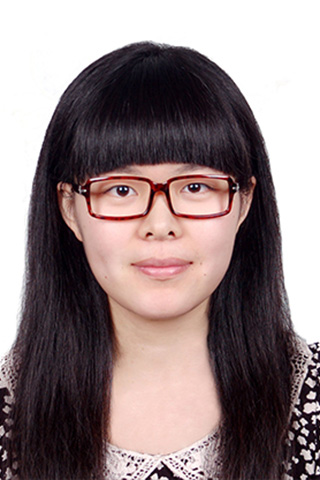 Short Bio: Ying He received BEng in Telecommunications Engineering from Beijing University of Posts and Telecommunications, China and PhD in Engineering (Telecommunications) from University of Technology Sydney, Australia, in in 2009 and 2017 respectively. From 2009 to 2013, she was with the Institute of Computing Technology, Chinese Academy of Sciences, Beijing, China, working on TD-LTE UE baseband chip design. She is currently a Senior Lecturer in the School of Electrical and Data Engineering, FEIT, University of Technology Sydney. Her research interests are physical layer algorithms in wireless communication networks, spectrum sharing, Vehicular communication and IoT.
Short Bio: Ying He received BEng in Telecommunications Engineering from Beijing University of Posts and Telecommunications, China and PhD in Engineering (Telecommunications) from University of Technology Sydney, Australia, in in 2009 and 2017 respectively. From 2009 to 2013, she was with the Institute of Computing Technology, Chinese Academy of Sciences, Beijing, China, working on TD-LTE UE baseband chip design. She is currently a Senior Lecturer in the School of Electrical and Data Engineering, FEIT, University of Technology Sydney. Her research interests are physical layer algorithms in wireless communication networks, spectrum sharing, Vehicular communication and IoT.
Title of the talk: Vehicle-to-Everything (V2X) Communications
Abstract: Vehicle to Vehicle (V2V) communication is another important field of the next generation wireless communication. It requires ultra-low latency and ultra-high QoS level. There are currently two standards in this area: DSRC based IEEE 802.11p and LTE V2V/V2X, both will operate in the same dedicated automotive band - 5.9 Ghz. Therefore, a coexistence scheme is needed to coordinate two standards and mitigate the interference in the same band. We proposed the coexistence and interference management solutions for DSRC and LTE V2V/V2X, enhance the performance by link aggregation of various DSRC (802.11p) and LTE V2X sources such as other automobiles, infrastructure, and pedestrians. Unmanned Aerial Vehicles (UAVs) as another important application in V2X, possess multiple desirable features such as high-manuverability, ease of deployment and flexibility which make them promising candidates in a wide variety of applications. In the recent years, UAVs have attracted a lot of attention in the area of wireless communications. However, UAVs have their inherent limitations. One major drawback in UAVs is the limited available energy. We proposed energy efficient collision avoidance algorithms for multi-UAV systems, a complete energy model for UAVs based on empirical studies of battery performance and energy efficient path planning for UAV-BSs for improved user coverage and throughput.
------------------------------------------------------------------------------------------
to be continued.



